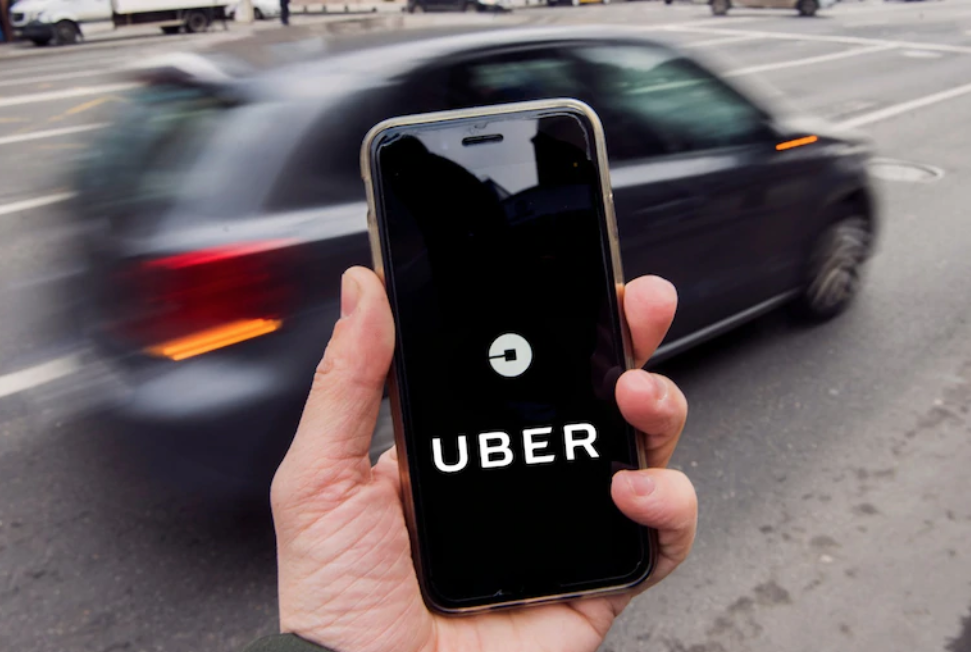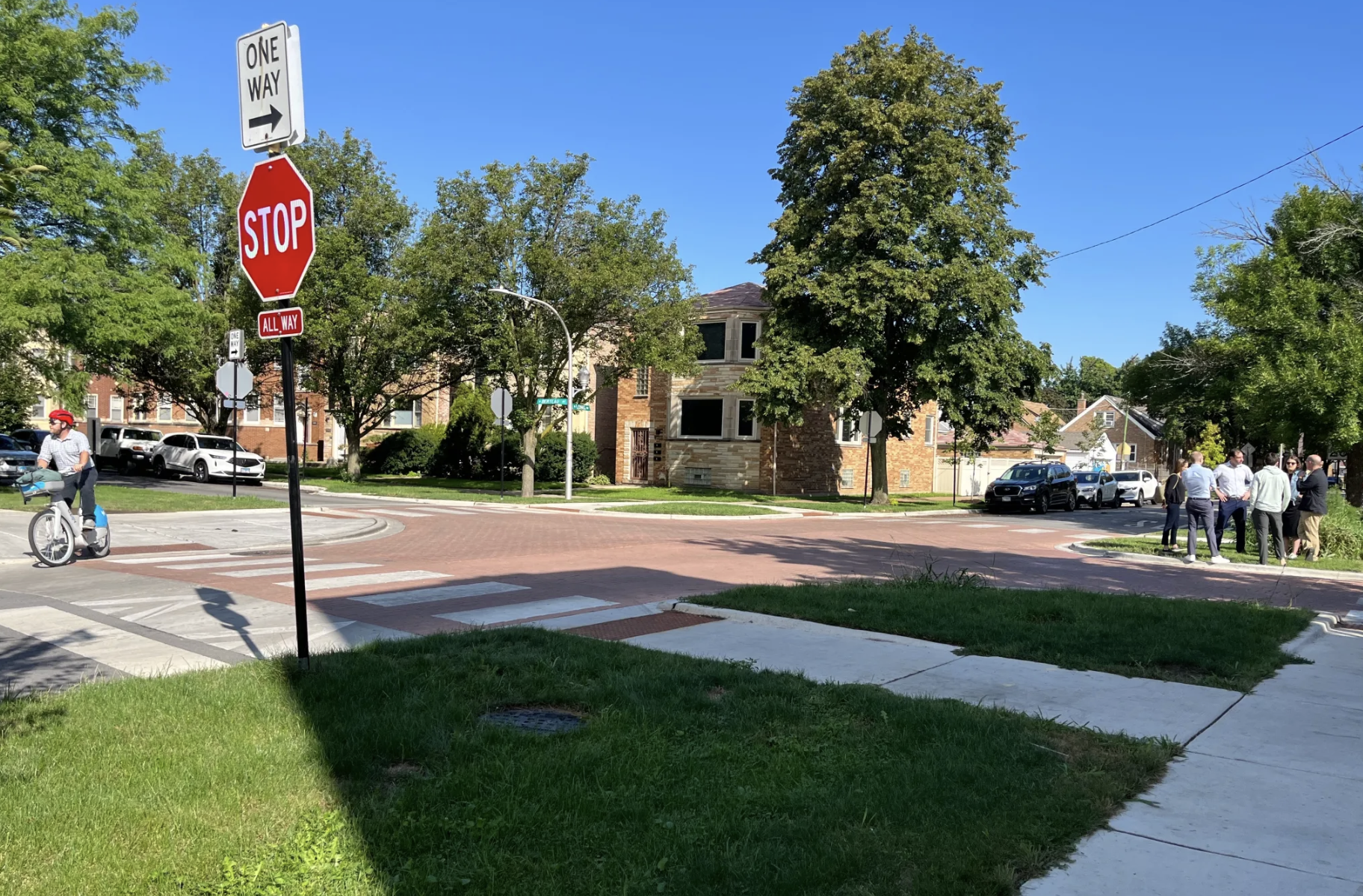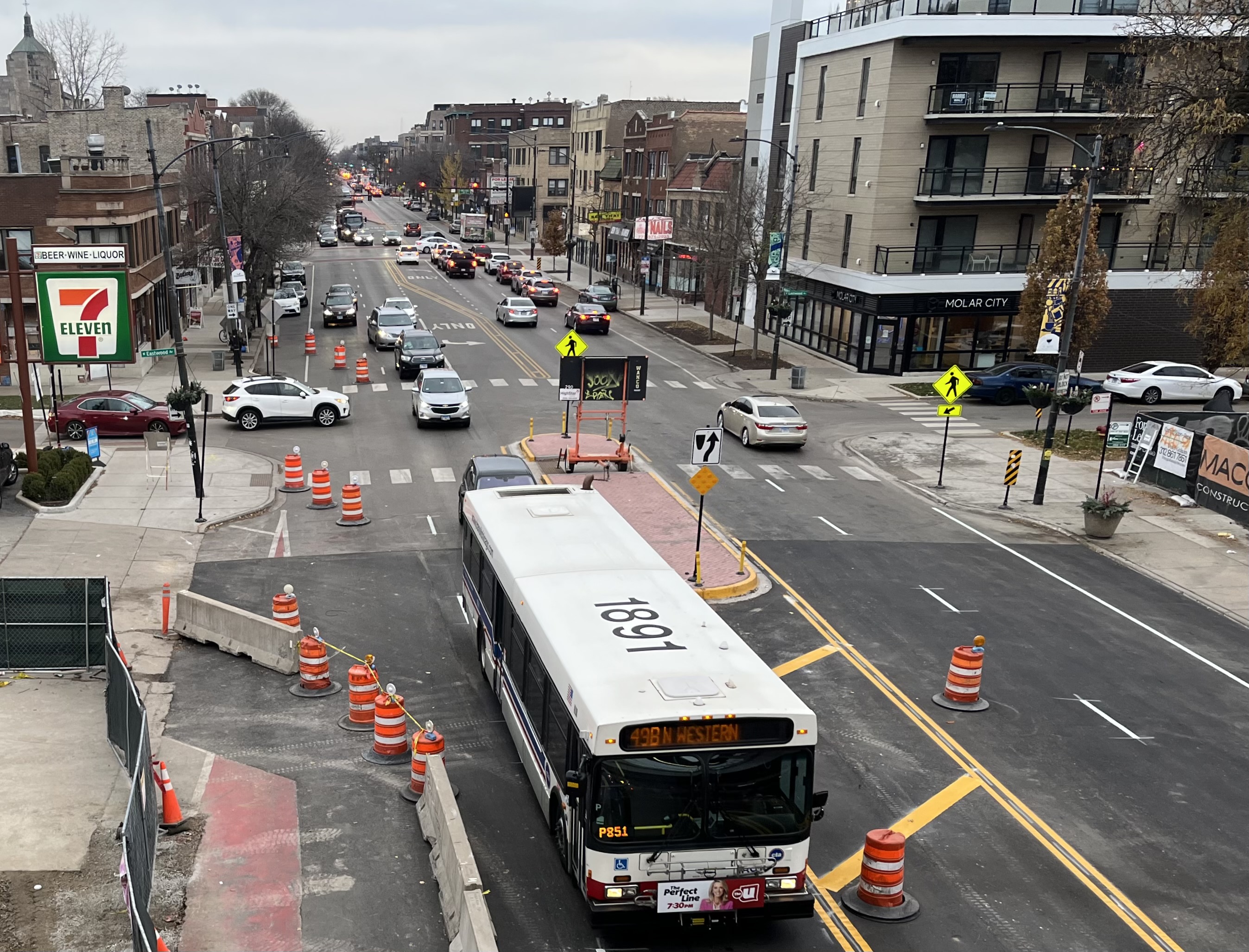Last spring when Uber was trying to block the city of Chicago from signing a deal with Lyft for citywide expansion of the Divvy bike-share system, they floated a bogus counterproposal. Now the company is using the same strategy to try and kill Mayor Lori Lightfoot's plan for a new fair ride-hail tax structure, which would reduce congestion and help improve CTA service.
The counterproposal is outlined in a blog post by Josh Gold, one of Uber's top New York City PR flacks who recently came to Chicago to fight the city proposal, which the company views as an existential threat to its business model. Let's go ahead and deconstruct the some of the dubious aspects of Gold's post and plan.
"The City’s proposal... will likely have very limited impact on congestion."

Lightfoot's plan will mostly jack up the price of traffic-clogging private downtown trips during peak hours, 6 a.m. to 10 p.m., raising the tax from the current flat rate of $0.72 to $3.00. According to a new city of Chicago study, half of all Chicago ride-hail trips start or end downtown, and a third both start and end there, with 29.817 trips taken during a typical evening rush. That $2.28 price hike will be a major incentive to switch to more sustainable modes, including Uber Pool and and Lyft Line, CTA, walking, and Divvy bike-share. That will go a long way towards reducing traffic jams. Moreover, the $2 million annually that the new fees are expected to raise for projects to speed up bus service will help shift more trips from cars to transit.
"[Lightfoot's] proposal will hurt Chicagoans [on the South and West sides] who take trips far from congested downtown."
Nope, since most rides hailed from the South and West sides are currently shared trips in the neighborhoods, most South and West side ride-hail users would get a 10 percent discount from the current $0.72 tax, saving them a little money.
And as the map below by Elizabeth Irvin of the Center for Neighborhood Technology illustrates, the vast majority of the new revenue would come the wealthier parts of Chicago, downtown and on the North Side. Yes, the average price of a ride on the South or West side is projected to go up by a modest 25 to 50 cents when you average in the minority of rides that are private or downtown trips. "[But] the actual increase in fees is likely to be even less than what is shown here, as reduced fees incentivize more people to switch to shared rides," Irvin writes.
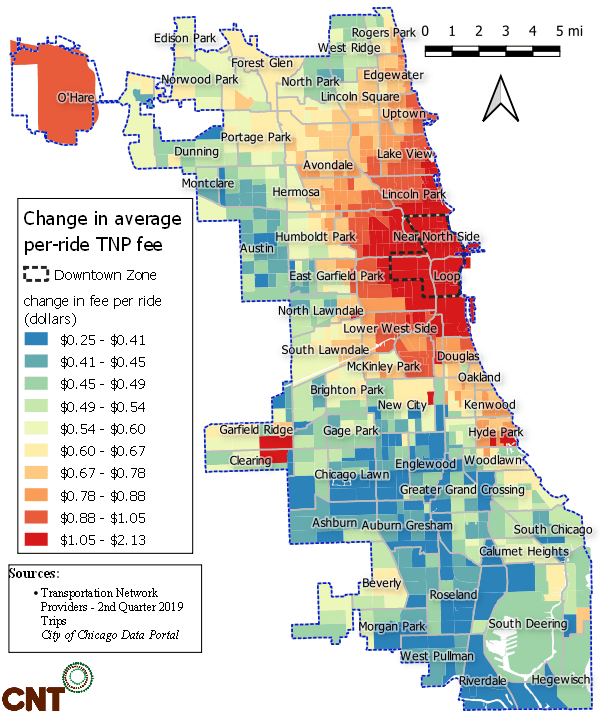
What Uber is proposing
While the city's plan includes a surcharge for trips that start or end downtown during peak hours, under Uber's proposal, "the highest tax is placed on trips starting and ending in areas with other transit options," including neighborhoods outside of downtown. "The lowest tax [would be] placed on trips that start and end in transit deserts. Trips that both start and end in a transit rich area would be taxed higher than those that only had one point in a transit-rich area."
However, the map of the proposed zones appears to have been devised by Uber staffers like Gold who parachuted into Chicago from the coasts, because it doesn't accurately reflect where Chicago's transit rich areas and transit deserts are located. Here are there proposed transportation network provider (a fancy word for ride-hail) zones.
The Uber staffers basically assumed that every South or West side community area is a transit desert, which is obviously untrue, since the Green, Blue, Pink, Orange, and Red lines serve many of these neighborhoods, and Metra serves many others. Even if we're looking at a combination of rail and traditional taxi service, several of these communities clearly don't belong in the green transit desert, low tax zone. For example, the Near West Side (community area 28) is crisscrossed by the the Green, Blue, and Pink lines, and West Town (community area 30), is served by the Blue Line, and trendy neighborhoods within it like River West, Ukrainian Village, and Wicker Park are swarmed by cabs on the weekends.
What's wrong with Uber's proposal
Granted, the idea of designating different zones as transit rich or transit deserts (assuming was done in a way that reflects reality, unlike Uber's map) is an interesting one. However, Uber's complex proposal is basically a smokescreen for charging lower fees that would be less of an incentive for people to switch to the less lucrative shared Uber Pool of Lyft Line services, avoid taking ride-share downtown during peak hours, or get around by transit, walking, or biking instead.
Under Lightfoot's proposal, shared rides in the neighborhoods would be taxed $0.60 less than their private counterparts. Shared rides downtown during peak hours would be taxed a full $1.75 less than doing the same trip privately.
As you can see from the following chart, under Uber's Plan, depending on the pickup or drop-off zones, the tax difference between a shared and private trip would be no more than $0.82 (for a trip from one high tax area to another), and as little as a dime (for a trip from a low tax area to another one.) That's not much of an incentive to switch to the more sustainable shared rides, which is to Uber's advantage because they make less money off of Uber Pool than private UberX trips.

And, as you can see from the chart below showing rates for private trips, in almost all cases the tax under Uber's plan would be significantly lower that that under Lightfoot's proposal. The exception is a trip from one non-downtown high tax neighborhood to another, like Lakeview to Logan Square, which would cost $0.47 more.
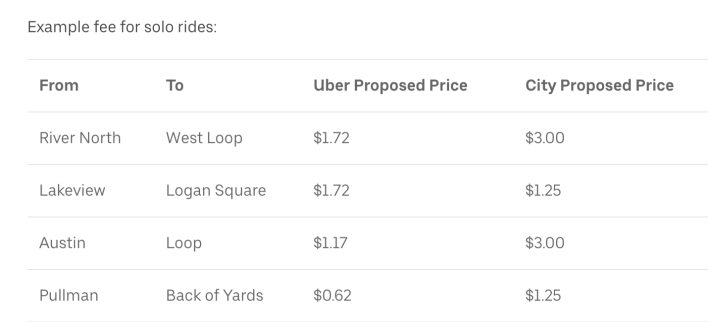
For example, the fee for a traffic clogging solo trip to the Loop during rush hour would be only $1.72 from a high tax area like North Center, and a mere $1.17 from a low tax neighborhood like Austin, compared to $3 under the city's plan. That's much less of an incentive to take transit downtown instead, or at least just taking Uber to your local transit station and riding the train downtown. Therefore the Uber plan would be much less effective for preventing Loop traffic jams and encouraging transit use.
Uber is claiming that their plan would generate $10 million more than the $40 million annual projection for Lightfoot's proposal. But this seems highly unlikely, since most kinds of trips would generate significantly less revenue.
As I noted earlier, half of all Chicago ride-hail trips currently start or end downtown, mostly during peak hours and mostly non-shared. Under Uber's plan, such a trip to or from downtown trip would generate $1.28 less if the other point is a high tax area, and a full $1.83 less if it's to or from a low-tax area. It would take an awful lot of trips between non-downtown high tax areas -- which only generate $0.47 more -- to make up for that loss, let alone earn an extra $10 million.
It certainly wouldn't be the first time Uber pulled an attractive number out of the air, like when they promised they would invest $450 million in Chicago if we let them have the exclusive rights to expand out bike-share system.
As you'd expect, Uber also proposes that the same fees be applied to taxis, which it says would generate $11 million more. That doesn't make much sense to me. Uber and Lyft already are already killing off the taxi industry thanks to their artificially cheap fares, an unfair advantage that's due to the companies' willingness to burn through venture capital. Adding an extra tax to cab fares could be the last nail in the coffin for the industry.
Gold then proposes that at least half of this mythical $21 million in extra revenue be used to subsidize reduced-fare passes for low-income Chicagoans. Obviously lower fares for poor people is a great idea that Streetsblog Chicago has advocated for in the past, and SBC writer Lynda Lopez has actually been working at the Active Transportation Alliance recently on their Fair Fares Chicagoland campaign to achieve that very goal.
But the fact is, Gold and his coworkers at Uber are less concerned about transit equity than maximizing their profits. Their alternative proposal is simply a diversion strategy in order to avoid higher taxes that would reduce the number of Uber trips, particularly traffic-jamming solo downtown rush-hour rides. And their claim that they can generate $10-21 million a year more appears to be a mirage.
